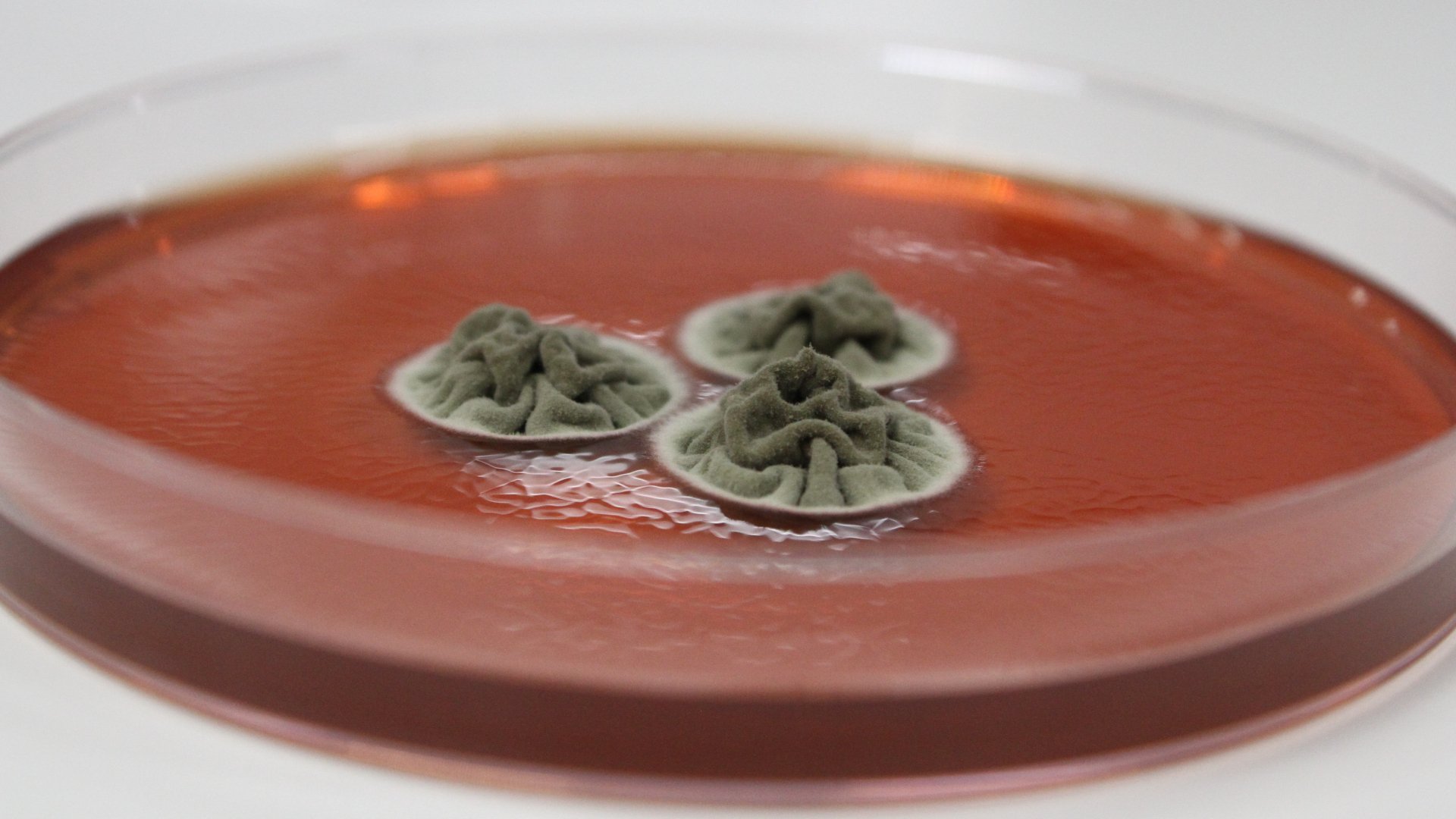A very prevalent fungus in the outdoor air, on decaying organic matter and on your moldy sandwich. A common fungus, but with special abilities!
A very prevalent fungus in the outdoor air, on decaying organic matter and on your moldy sandwich. A common fungus, but with special abilities!
It produces enzymes that can digest the plastic polyurethaan. Beside this, the fungus also produces substances that kill other fungi: antimycotics. As a result, this fungus is very interesting to research for both the growing plastic pollution problem, and as a natural pesticide in agriculture.
Plastic eater
As shown in research, Cladosporium cladosporioides is one of the best plastic-degrading fungi. After only two weeks, the fungus digested 87% of the plastic it was placed on in the experiment. Special enzymes break the molecule bonds within the plastic. By researching and optimizing this process, the enzymes could be used in the recycling of plastic.
Fungi are known for their ability to cleanse their environments: oyster mushrooms can be fed with cigarette butts, one of the biggest sources of microplastics. Every year, 845,000 tonnes of cigarettes end up in nature. Over the course of 15 years, these are broken down into microplastics. The oyster mushroom digests the microplastics and obtains its nutrients from this process: win-win!
Microbes as natural pesticides
One of the places where C. cladosporioides can be found is in the soil. In here, it competes with other microbes. In the battle for food, space and water, it produces substances that kill other fungi. These fungi are mostly pathogens for plants.
This is why researchers are very interested in C. cladosporioides. Which substances kill the other fungi? And in what ways? With this knowledge, we can use fungi and bacteria to protect plants from diseases and pests in a sustainable way. Not only C. cladosporioides can be used as a natural pesticide. There are already numerous bacterial and fungal species present in agricultural soils that protect plants from infection. This is an interaction between plant and microbe. The microbes receive nutrients from the plants, and in return, the microbes produce substances that keep pathogens at bay.

